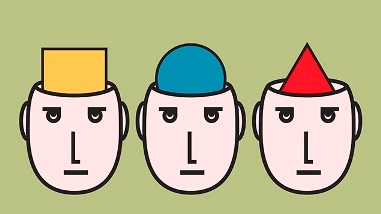Diversity – Finding the next brightest talent
What links Albert Einstein, Jerry Seinfeld, Emily Dickinson and Courtney Love? It sounds like the start of a highly improbable joke. But the answer – they have all been diagnosed, or are assumed to have been, on the autism spectrum – shouldn’t come as a surprise.
A link between certain neurological conditions and high performance, whether in evolutionary scientific theory or stand-up comedy, has long been acknowledged. And finally businesses are starting to use this information to their advantage.
Defining Neurodiversity
Neurodiversity is defined by Dictionary.com as, “the variation and differences in neurological structure and function that exist among human beings, especially when viewed as being normal and natural rather than pathological.”
Neurodiversity is beginning to enter the HR lexicon as an umbrella term to cover individuals with autism, ADHD, dyslexia, dyspraxia and Asperger’s. It’s estimated that around 10 per cent of the population is neurodivergent in some way, so employers that choose to ignore it could be missing out on talent.
Neurodiversity at workplace
Neurodiversity is an aspect of diversity that enhances the workplace in numerous ways. People with neurocognitive disabilities have talents, perspectives and skills that can be distinctly beneficial in many work environments. More and more employers are beginning to understand that hiring neurodiverse employees can provide competitive edge that brings measurable benefits, both financially and in terms of workplace culture.
Hiring and Accommodating Neurodivergence
Quite often, people with neurocognitive disabilities experience barriers to employment before they can even begin a job.
Job Descriptions
When considering hiring neurodiverse people, employers will need to first ensure job descriptions use inclusive language, making it clear that the organization welcomes neurodiversity.
Interviewing
Conventional interviewing methods are often not the most effective recruitment method for neurodiverse hiring. Interviewers should be trained on what to expect and how to conduct interviews with neurodiverse candidates, including what to ask and how verbal and non-verbal responses should be interpreted.
Workspace, Work Schedules and Other Accommodations
Providing appropriate workplace accommodations generally makes a significant difference in ensuring positive, productive experiences for neurodiverse employees. There is no “one-size-fits-all” model for accommodating employees with disabilities, including neurodiverse employees. For example, open office spaces can sometimes pose challenges for employees with processing needs. As such, employers may choose to have a designated quiet area of the office to work, a single office with a door or may give the employee noise cancelling headphones to eliminate distractions.
As with any reasonable accommodation made for an employee with a disability, accommodations do not require lowering performance standards or eliminating essential job functions. Instead, it means modifying the work environment, or the way in which tasks are completed, to help employees successfully perform their job duties.
Diversity, Inclusivity and Productivity
Diversity and Inclusivity at workplace brings productivity. Companies must embrace an alternative philosophy, one that calls on managers to do the hard work of fitting irregular puzzle pieces together. The work for managers will be harder, but the payoff for companies will be considerable.
